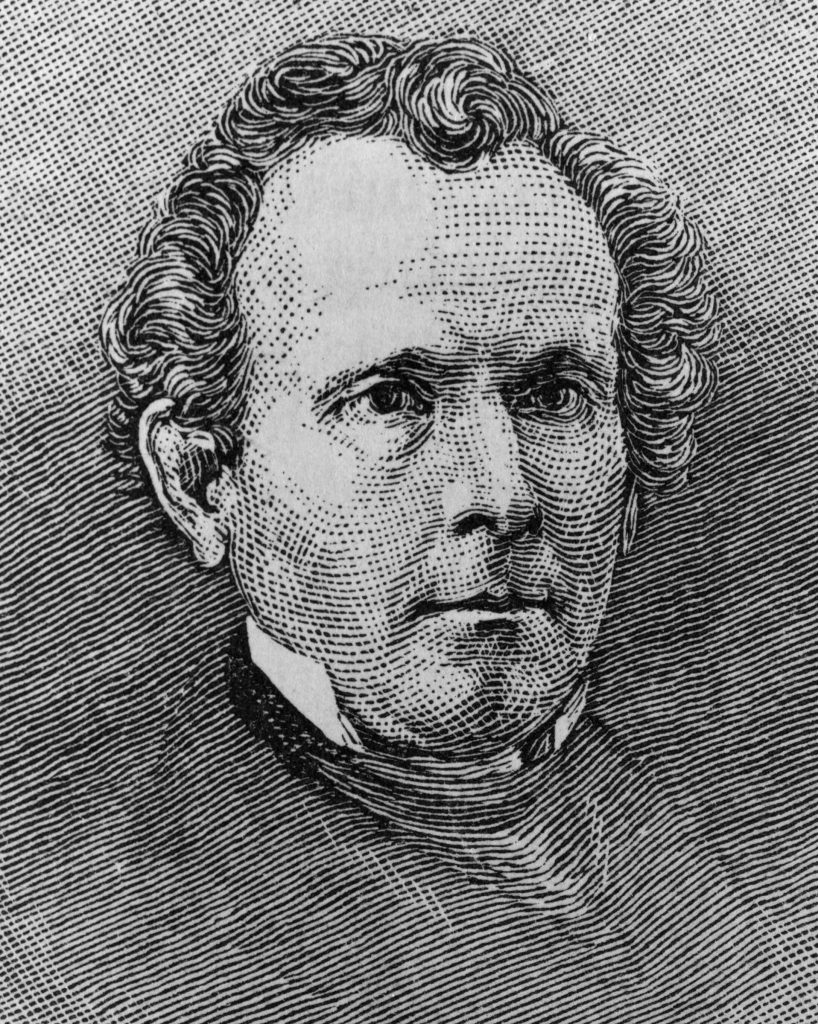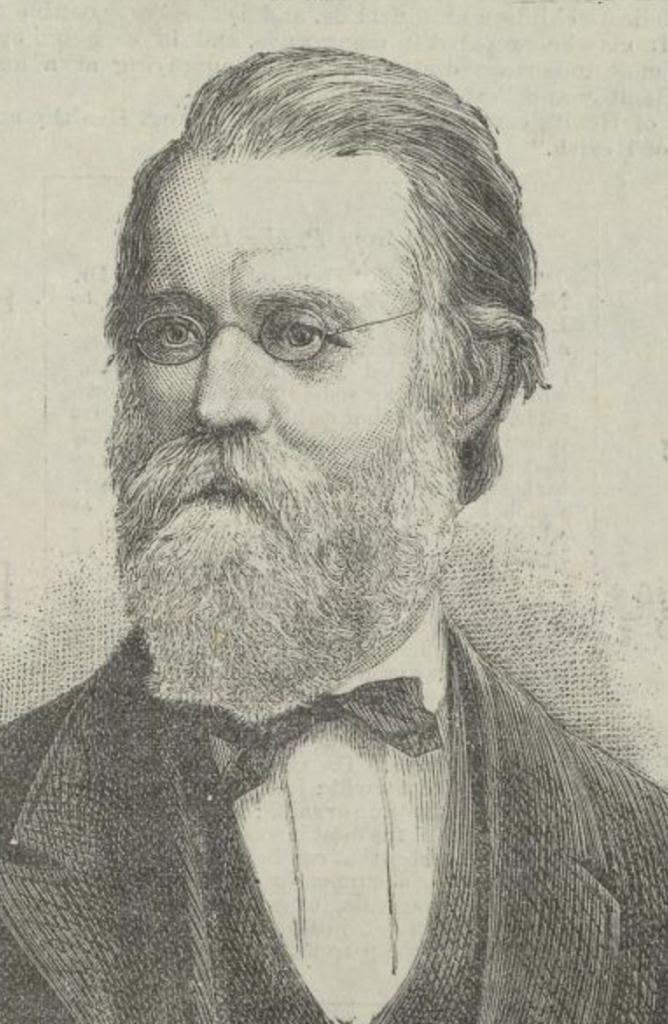1810: Mary Sargent Neal was born in Goffstown, New Hampshire.
1828: Mary began writing poems, stories, and essays for newspapers. After succeeding in becoming certified as a teacher, she taught at a local school.

1831: Mary married Hiram Gove and moved to Weare, New Hampshire.
1832: Elma Mary Gove (1832–1921) was Mary’s only child with Hiram. During her marriage to Hiram, she suffered four miscarriages.
1832: After hearing Sylvester Graham’s lecture in Boston in 1832, Thomas Low Nichols, a young medical student at Dartmouth, gave up the study of medicine and became a newspaperman. He became the New York Evening Herald editor after traveling over the West and South as a newsman. Thomas was active in several movements, including women’s rights. Through his work, he eventually met Mary Gove, who began to lecture on Grahamism.
1837: The Goves moved to Lynn, Massachusetts, and Mary opened a Boarding School. She transformed her schoolhouse into a Grahamite boarding school, requiring her students to adopt the reformer’s diet (giving up meat and relying wholly on fruits, whole grains, vegetables, and water for sustenance).
1837: Sylvester Graham, a lecturer and writer, started a revolution in understanding health and sickness and began a lecture crusade. His message appealed strongly to Thomas and Mary Nichols, who attended Graham’s lectures and immediately began applying his principles. Grahamites, as they were called, limited their diets, had strict mealtimes, avoided meat, spices, and condiments, abstained from tea, coffee, or alcohol, breathed fresh air, and bathed regularly.
1837 – 1841: Mary began lecturing on anatomy and physiology. She was invited by a society of ladies in Boston to give a course on health lectures. She lectured constantly for several years in Boston with great success and continued lecturing in Massachusetts, Maine, New Hampshire, Rhode Island, New York, New Jersey, Pennsylvania, and Maryland.
1840: Mary Gove went to New York City to study the water cure under Dr. Joel Shew. The Shew residence functioned as a hydropathy center, and Mary continued to observe, practice, and then started teaching classes on Grahamite reform and the water cure for women.
1841: Mary left her husband with her daughter and returned to her parent’s home; Gove eventually agreed to a divorce. Having been emotionally and sexually abused for ten years by Hiram Gove, Mary made it her life’s work to inform women about choices, health, their bodies, and opportunities.
1844: Mary began writing for the Democratic Review. She also wrote the “Medical Elective Papers” in the American Review and contributed to Godey’s Lady’s Book.
1845: Thomas began the Water-Cure Journal and Herald of Reforms. He edited, and they both wrote in it. It was their first significant project together. These journals were devoted to physiology, hydropathy, and the Laws of Life.
1845: Mary traveled to Brattleboro, Vermont, where she sought professional instruction in water cure methods from Dr. Robert Wesselhoeft. Wesselhoeft received training directly from the specialists at Gräfenberg, Germany. The Brattleboro Center boasted hot and cold running water and a nearby outdoor spa where patients benefitted from cold bathing, fresh air, and the exercise one accomplished while walking to the springs.
1845 – 1850: She founded a “water-cure” clinic in New York.
1846: A Women’s Physiological Society was formed, and lectures were given to women, often separate lectures for married and unmarried women. Mrs. Gove’s lectures were a great success and continued for several years, even after the Physiological Society ceased to exist. These lectures were later published in book form, Lectures to Ladies on Anatomy and Physiology.
1847: Mary divorces Hiram Gove, which was extremely difficult for a woman during this time period.

He completed his medical studies to practice
and work alongside his wife.
1848: Mary Gove married Thomas Low Nichols on July 29. Thomas was a writer and editor. He was deeply interested in health reform and had progressive views of women’s rights. Together, they worked to promote health.
1849: Mary published Experience in Water-Cure: A Familiar Exposition of the Principles and Results of Water Treatment in the Cure of Acute and Chronic Diseases. This book illustrated numerous cases in the author’s practice, explaining water-cure processes, diet advice, and a daily regimen. Particular focus was on educating women in the treatment of female diseases, water treatment in childbirth, and the diseases of infancy.
1850: Mary gives birth to her second daughter, Mary Wilhelmina Nichols, on November 5. Thomas graduated with high honors from New York University with a medical degree and began working alongside Mary.
1850: Mary Nichols was a prolific writer and a leading contributor to the Water-Cure Journal. Together, She and Thomas wrote Marriage: its history, character, and results. This work argued forcefully against traditional monogamy and favored freedom of affection in love relations. The authors argued not only for a woman’s right to say no to sex but also for her right to say yes, even outside of marriage.
1851: On September 15, 1851, Mary and Thomas opened The American Hydropathic Institute (AHI) in New York City to educate men and women. The AHI was a medical school for instruction in all branches of a thorough medical education, including the principles and practices of Water Cure in acute or chronic disease, surgery, and obstetrics. The AHI was the first school of this type in America and the world’s first drugless college. Although called a hydropathic institute, its teachings were Hygienic.
- At that time, no medical school in the world admitted women, and there was strong opposition to women’s admission into the medical profession. The Hygienic school was far ahead of the other schools. Women were found to be the strongest champions of “woman’s rights” among the Hygienists. Indeed, hygienists played a leading role in all of the reform movements of the time. If ever a complete history of the nineteenth century is written, the part played by Hygienists in its progress will be prominent.
- Hydropathy was practiced by practically all Hygienists at that time, the only known exceptions being Isaac Jennings and William Alcott. Even Graham was misled by the claims of the hydropathic school. Hydropathy was also taught at Russell Thacker Trall’s College.
1852: Mary published Experience in Water-Cure: a Familiar Exposition of the Principles and Results of Water Treatment in Acute and Chronic Diseases. This book illustrated numerous cases in the author’s practice, with an explanation of water-cure processes, advice on diet and regimen, the treatment of female diseases, water treatment in childbirth, and the diseases of infancy.
1853: Another project was the Water Cure Journal and Harold of Reforms. These publications were devoted to physiology, hydropathy, and the Laws of Life and included articles about individual and social health, education, hydrotherapy, and women’s rights. It contained articles about the water cure, hygiene, dietetics, and dress reform. July 1851. Stanford Collection – Vol 1-8. The journal continued on after 1855 as the Hygienic Teacher and Water-Cure Journal.
In the May 1853 issue of Nichols’ Journal, Mary Gove said: “Man has cultivated what is about him and neglected his own nature. He has been careful for the earth and animals. He loves a beautiful garden and is proud of a noble horse. He builds hospitals for the sick and prisons for the criminal. But he digs not up the evil root of ignorance that bears a fruitful crop of disease and crime.” We can only deplore facts like these and labor to put forth light everywhere upon the earth’s darkness.
In the April 1853 issue of Nichols’ Journal, Mary Gove says: “I acknowledge I have been mobbed on account of my dress. Fourteen years ago, several persons determined to tar and feather me if I dared to lecture in a certain small city. I thought I was needed there, and I went with solemn conviction. I outlived all this ignorance. Still, prejudice was indeed bitter and cruel in those days. Years have greatly mended the manner of the mobs, but more than one scamp has felt the weight of my husband’s cane in this city.”

1856: Mary and Thomas moved to Yellow Springs, Ohio, where they established another water-cure institute in 1856. They offered a home, a school, a vegetable diet, hydropathic treatments, and the disciplined life of a self-sustaining association to men and women who desired freedom from the despotism of society. They wanted to begin an experiment in community living, creating a culture of free love. Thomas gave local lectures such as “Free Love: a Doctrine of Spiritualism.” These were not well received within the local community. The public was not ready for this.
1861: When the Civil War broke out, Mary and her husband left New York and sailed to England. They opposed the war and would not support either side. Shortly after their arrival, they began writing for English journals. When the opportunity presented itself, they lectured on vegetarianism and the laws of health.
1867 to 1872: Mary and Thomas moved to Malvern, England, the site of James Gully’s hydropathy spa, and set up their clinic.
1874: Mary summarized what she had learned throughout her career in her book A Woman’s Work in Water Cure and Sanitary Education to continue to educate and help other women.
1884: Mary Gove Nichols died in London on May 30th.


 SUBSCRIBE TODAY AND NEVER MISS AN UPDATE
SUBSCRIBE TODAY AND NEVER MISS AN UPDATE